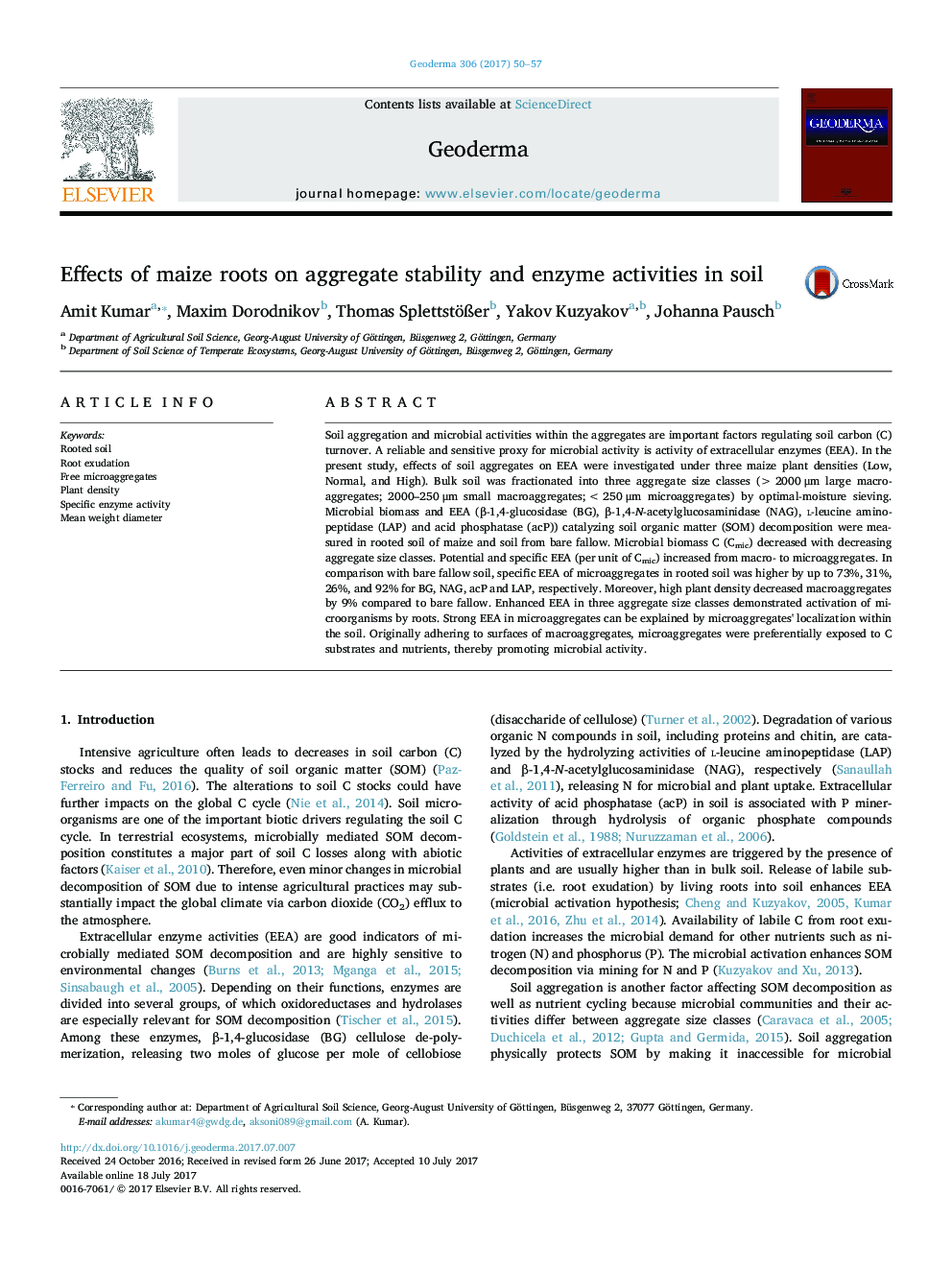| کد مقاله | کد نشریه | سال انتشار | مقاله انگلیسی | نسخه تمام متن |
|---|---|---|---|---|
| 5770455 | 1629411 | 2017 | 8 صفحه PDF | دانلود رایگان |
- Higher EEA in rooted soil than bare fallow soil supports plant-mediated microbial activation.
- Enhanced EEA in microaggregates than macroaggregates.
- Minimal or no change on specific EEA in bare fallow soil indicates microbial inefficiency for enzyme production in absence of root-released organics.
Soil aggregation and microbial activities within the aggregates are important factors regulating soil carbon (C) turnover. A reliable and sensitive proxy for microbial activity is activity of extracellular enzymes (EEA). In the present study, effects of soil aggregates on EEA were investigated under three maize plant densities (Low, Normal, and High). Bulk soil was fractionated into three aggregate size classes (> 2000 μm large macroaggregates; 2000-250 μm small macroaggregates; < 250 μm microaggregates) by optimal-moisture sieving. Microbial biomass and EEA (β-1,4-glucosidase (BG), β-1,4-N-acetylglucosaminidase (NAG), l-leucine aminopeptidase (LAP) and acid phosphatase (acP)) catalyzing soil organic matter (SOM) decomposition were measured in rooted soil of maize and soil from bare fallow. Microbial biomass C (Cmic) decreased with decreasing aggregate size classes. Potential and specific EEA (per unit of Cmic) increased from macro- to microaggregates. In comparison with bare fallow soil, specific EEA of microaggregates in rooted soil was higher by up to 73%, 31%, 26%, and 92% for BG, NAG, acP and LAP, respectively. Moreover, high plant density decreased macroaggregates by 9% compared to bare fallow. Enhanced EEA in three aggregate size classes demonstrated activation of microorganisms by roots. Strong EEA in microaggregates can be explained by microaggregates' localization within the soil. Originally adhering to surfaces of macroaggregates, microaggregates were preferentially exposed to C substrates and nutrients, thereby promoting microbial activity.
Journal: Geoderma - Volume 306, 15 November 2017, Pages 50-57
